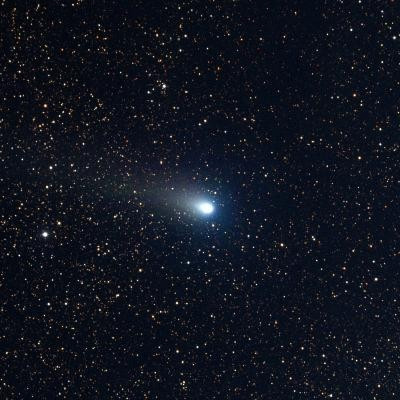Meteor Shower to Streak Across Sky Saturday

On Saturday, expect the night sky to be filled with meteors, according to astronomers.
We're predicting as many as 750 meteors per hour, says Bill Cooke of NASA's Meteoroid Environment Office. However, astronomers in North America will likely be out of luck since the shower will coincide with daylight. The timing of the shower favors observers in the Middle East, north Africa and parts of Europe, Cooke added.
The meteor shower will come from Comet Giacobini-Zinner, a comet that swings by the inner solar system every 6.6 years, according to NASA.
The meteor shower will consist of Draconoid particles that shoot off from the comet, a comet expected to pass close to Earth in February.
In the past, there has been a dramatic increase in the meteor shower rate a year before the comet's return, David Huestis, astronomy instructor at Bryant University, Smithfield, R.I., wrote in Skyscrapers, Inc., the Amateur Astronomical Society of Rhode Island. Since the peak will be short lived, we may only experience a little enhanced activity once darkness falls. Events like this scenario are difficult to forecast, but anything is possible.
At this point, it's anyone's guess as to how explosive the meteor shower will be. Each time the comet passes by the solar system, it leaves a trail of dust that act as TNT to meteors.
Most years, we pass through gaps between filaments, maybe just grazing one or two as we go by, Cooke said. Occasionally, though, we hit one nearly head on--and the fireworks begin.
One forecaster, Paul Wiegert of the University of Western Ontario in London, Canada, predicted the meteor rate could go as high as 1,000 per hour -- the definition of a meteor storm. In 1933 and 1946, meteors slammed into the dust filaments and caused storms of more than 10,000 meteor showers per hour.
© Copyright IBTimes 2025. All rights reserved.





















